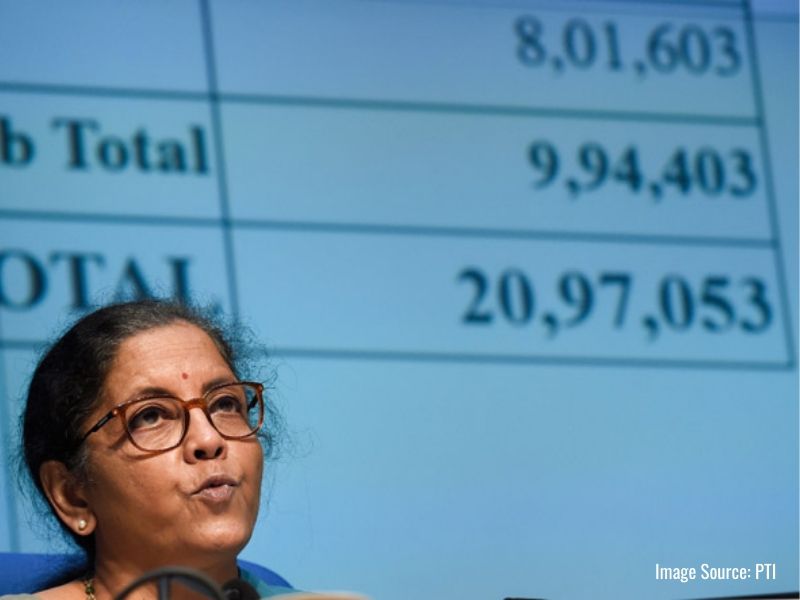The verdict of most well-informed monitors of the Indian economy on the stimulus package presented in five daily installments by Union finance minister Nirmala Sitharaman beginning May 13, to counteract the damage caused by loss of livelihoods and income of an estimated 400 million citizens employed in the micro, small and medium enterprises (MSMEs) countrywide following the eight-week national lockdown which began on March 25, is underwhelming and at best, lukewarm. In a dramatic broadcast on national television and radio on May 12, prime minister Narendra Modi announced a Rs.20 lakh crore (equivalent to 10 percent of GDP projected for 2020-21) stimulus package of the Central government to get the wheels of industry and business moving. Three days after the final instalment of the economy stimulus package was presented to the nation on May 17, the Times of India reported that calculations and analyses of over a dozen banks – including the government-owned State Bank of India – brokerages and rating agencies, indicate that after all the grants, loans and concessions of the package are added up, size of the stimulus is Rs.2-2.5 lakh crore equivalent to 1-1.3 percent of GDP.
On the other hand, Sitharaman maintains that the entire package starting from March 26 when the first Rs.1.7 lakh crore stimulus was announced for industry and other stimuli given to banks to ease credit flows, plus the first three instalments of the last package added up to Rs.12 lakh crore or 6.60 percent of GDP. The argument advanced by her in her media briefings was that the first three tranches of the package were carefully designed to ease the flow of bank credit to industry to pay wages and reignite the fire of India Inc, especially MSMEs. The two remaining tranches of the Rs.20 lakh crore package announced on May 16 and 17 were according to her, designed to place money in the hands of the public and boost consumer demand. Evidently, the stock market didn’t agree. On May 18, the Sensex plunged by 1,027 points (3.31 percent) and the Nifty 314 points (3.43 percent).
One presumes that the FM’s preference for loans over grants and more than abundant caution, that is a defining characteristic of the reported Rs.20 lakh crore economy stimulus package, is rooted in apprehension of damage to the banking system, impact on the fiscal deficit and runaway inflation. Yet it is pertinent to note that in several countries around the world, these fears have been set aside to compensate citizens for loss of jobs and livelihoods during the Covid-19 induced national lockdowns.
In the US and Canada, all citizens who have been furloughed (temporarily unemployed) are compensated with government cheques of $1,200-$6,000) directly deposited into their accounts. More wondrously, in the UK all furloughed employees are receiving 85 percent of their current pay from government with the remaining 15 percent paid by their employers. Therefore, it’s a mystery why despite over 1 billion citizens having been conferred UID (unique identity), the best that the BJP/NDA government can do is to deposit a mere Rs.500 per month into the bank accounts of 80 million women who have Jan Dhan accounts.
Against this, your editor has repeatedly sent detailed proposals to the Union government and its several arms to deposit Rs.4,444 monthly for the next 12 months or Rs.6,000 monthly for the next nine months, into the bank accounts of 150 million poorest households to tide them over the Covid crisis. To allay the government’s fears of runaway inflation, it is proposed that the total amount aggregating Rs.8 lakh crore (3.52 percent of GDP) is borrowed from the Reserve Bank of India which can print the money if necessary. The economy will get a huge boost by way of stimulation of aggregate demand.
Admittedly, this injection of Rs.8 lakh crore into the economy will generate inflationary pressures. However, this amount can be returned to the RBI after being mobilised in the Union Budget 2021-22 next February. By modestly cutting establishment, unmerited subsidies and defence expenditure and accelerating privatisation of public sector enterprises, this amount can be mobilised (see https://www.educationworld.in/union-budget-2020-21-small-change-for-human-capital-development/ for schema) and returned to RBI to squelch inflation. Given the extraordinary suffering experienced by migrant workers during the national lockdown, it’s highly unlikely that India Inc or the middle class will object to bearing some pain to compensate them and MSME workers cruelly neglected and short-changed during the unprecedented national lockdown.
The finance minister still has the time and opportunity to make good the Rs.20 lakh crore stimulus package pledge of the prime minister by setting aside Rs.12 lakh crore for industry, agriculture and services sectors to boost production and employment. The remaining Rs.8 lakh crore urgently needs to be paid by way of direct benefit grants to 150 million poorest households as compensation that will also boost aggregate demand.
Posted in National, News























